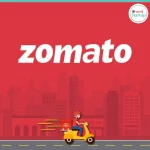ആഗോളതലത്തിൽ അംഗീകരിക്കപ്പെട്ട ഒരു ബ്രാൻഡ് നിർമ്മിക്കുക എന്നത് എളുപ്പമുള്ള കാര്യമല്ല. വിവിധ വിപണികളിലെ വൈവിധ്യമാർന്ന ഉപഭോക്തൃ ഗ്രൂപ്പുകളെ ആകർഷിക്കുന്ന ഉൽപ്പന്നങ്ങൾ, വിപണനം, വിതരണ തന്ത്രങ്ങൾ എന്നിവ കാരണം ഈ ബ്രാൻഡുകൾ ലോകമെമ്പാടുമുള്ള ആഘോഷിക്കപ്പെടുന്നു. ഈ വിജയം ഉണ്ടായിരുന്നിട്ടും, ഏറ്റവും വിജയകരമായ ബ്രാൻഡുകൾ പോലും പുതിയ വിപണികളിൽ പ്രവേശിക്കുമ്പോൾ ബുദ്ധിമുട്ടുകൾ നേരിടേണ്ടിവരും.
ബിൽ ഗേറ്റ്സ് ഒരിക്കൽ പ്രസ്താവിച്ചതുപോലെ, “വിജയം ഒരു മോശം അധ്യാപകനാണ്. അത് മിടുക്കരായ ആളുകളെ തോൽക്കാൻ കഴിയില്ലെന്ന് ചിന്തിക്കാനും പ്രേരിപ്പിക്കുന്നു.” ചില വിപണികളിൽ വിജയകരമായ ബ്രാൻഡുകളെ സമ്മർദ്ദത്തിലാക്കിയ ചില ഘടകങ്ങൾ പരിശോധിക്കേണ്ടത് പ്രധാനമാണ്. ചിലത് ഇതാ:
1) വിപണി ധാരണയുടെ അഭാവം
ഒരു കമ്പനി ഒരു പുതിയ വിപണിയിൽ പ്രവേശിക്കുമ്പോൾ, പ്രാദേശിക സംസ്കാരം, ഉപഭോക്തൃ പെരുമാറ്റം, മാർക്കറ്റ് ഡയനാമിക്സ് എന്നിവയെക്കുറിച്ച് സമഗ്രമായ ധാരണ ഉണ്ടായിരിക്കേണ്ടത് പ്രധാനമാണ്. ഈ ധാരണയില്ലാതെ, കമ്പനികൾ പരാജയത്തിലേക്ക് നയിച്ചേക്കാവുന്ന വിലയേറിയ തെറ്റുകൾ വരുത്താം. ഉദാഹരണത്തിന്, UK യിലെ ഏറ്റവും വലിയ റീട്ടെയിലർമാരിലൊരാളായ ടെസ്കോ, “ഫ്രഷ് & ഈസി” എന്ന ബ്രാൻഡ് നാമത്തിൽ യുണൈറ്റഡ് സ്റ്റേറ്റ്സിൽ പ്രവേശിക്കാൻ ശ്രമിച്ചു. പക്ഷെ, കമ്പനിക്ക് നിരവധി വെല്ലുവിളികൾ നേരിടേണ്ടിവന്നു, അത് ആത്യന്തികമായി അവരുടെ സ്റ്റോറുകൾ റോഡിൻ്റെ തെറ്റായ വശത്തായിരുന്നു, മാത്രമല്ല വൈവിധ്യമാർന്ന ഉൽപ്പന്നങ്ങളുള്ള വലിയ സ്റ്റോറുകൾക്കായുള്ള അമേരിക്കൻ ഉപഭോക്താക്കളുടെ മുൻഗണനകൾ ഇവർക്ക് നിറവേറ്റാൻ കഴിഞ്ഞില്ല. സ്റ്റോറുകളുടെ ദൈനംദിന ഷോപ്പിംഗ് രൂപകൽപ്പനയും സാധാരണ അമേരിക്കൻ പലചരക്ക് കടയുടെ ബൾക്ക് ഷോപ്പിംഗ് മുൻഗണനയുമായി വ്യത്യാസപ്പെട്ടിരിക്കുന്നു, ഇത് ഫ്രഷ് & ഈസിക്ക് ഉപഭോക്താക്കളെ ആകർഷിക്കുന്നത് ബുദ്ധിമുട്ടാക്കി.
2) കാര്യക്ഷമമല്ലാത്ത സോഫ്റ്റ്വെയർ സിസ്റ്റങ്ങൾ
ഒരു കമ്പനി ഉപയോഗിക്കുന്ന വിവര സംവിധാനങ്ങൾ വിശ്വസനീയമല്ലെങ്കിൽ, അത് കൃത്യമല്ലാത്തതോ അപൂർണ്ണമായതോ ആയ ഡാറ്റയ്ക്ക് കാരണമായേക്കാം, ഇത് ഉചിതമായ തീരുമാനമെടുക്കുന്നതിനെ പ്രതികൂലമായി ബാധിക്കും. അമേരിക്കൻ റീട്ടെയിൽ ഭീമനായ ടാർഗെറ്റ് അതിൻ്റെ സാമീപ്യവും ഇംഗ്ലീഷ് സംസാരിക്കുന്ന ഉപഭോക്താക്കളും കാരണം കനേഡിയൻ വിപണിയിൽ സാധ്യത കണ്ടു. പക്ഷെ, കാനഡയിലേക്കുള്ള ടാർഗെറ്റിന്റെ പ്രവേശനം വിജയിച്ചില്ല. കമ്പനി അതിവേഗം വികസിച്ചു, കേവലം പത്ത് മാസത്തിനുള്ളിൽ 124 ലൊക്കേഷനുകൾ അപര്യാപ്തമായ വിതരണ ശൃംഖലയിൽ തുറന്നു, അത് ഘടനാപരമായി മോശമായതും ഡാറ്റ പിശകുകൾ കൊണ്ട് വലയാനുമിടയാക്കി. പ്രധാന സാങ്കേതിക പ്രശ്നങ്ങളും വികലമായ ചരക്ക് വിതരണ സംവിധാനവും ഈ പ്രശ്നങ്ങൾ വഷളാക്കി, ഇത് വെയർഹൗസുകളിൽ അമിത സംഭരണത്തിലേക്കും ശൂന്യമായ സ്റ്റോറുകളിലും നയിച്ചു. ആവശ്യത്തിന് സ്റ്റോക്കില്ലാത്ത സ്റ്റോറുകൾ ഉപഭോക്താക്കളെ നിരാശരാക്കുകയും വാൾമാർട്ട്, കോസ്റ്റ്കോ, ജയൻ്റ് ടൈഗർ, സിയേഴ്സ് തുടങ്ങിയ എതിരാളികളോട് മത്സരിക്കാനുള്ള ടാർഗെറ്റിന്റെ കഴിവിനെ ബാധിക്കുകയും ചെയ്തു.
3) തെറ്റിദ്ധരിപ്പിക്കുന്ന പരസ്യം
കമ്പനികൾ തങ്ങളുടെ പരസ്യത്തിൽ സത്യസന്ധവും സുതാര്യവുമായിരിക്കണമെന്ന് ഉപഭോക്താക്കൾ പ്രതീക്ഷിക്കുന്നു. തങ്ങൾ തെറ്റിദ്ധരിക്കപ്പെട്ടുവെന്ന് അവർക്ക് തോന്നുമ്പോൾ, അത് ദേഷ്യവും നിരാശയും പോലുള്ള നിഷേധാത്മക വികാരങ്ങളിലേക്ക് നയിച്ചേക്കാം. 1999-ൽ കൊക്കകോള യുഎസിൽ ദസാനി കുപ്പിവെള്ളം പുറത്തിറക്കി, അവിടെ അത് വൻ വിജയമായി. 2004-ലാണ് ദസാനി യുകെ വിപണിയിലേക്ക് പ്രവേശിച്ചത്. ശുദ്ധീകരിച്ച വെള്ളമാണെന്ന് പരസ്യം ചെയ്യപ്പെട്ടിട്ടും, അത് ആൽപൈൻ ഹിമാനിയിൽ നിന്നോ പ്രകൃതിദത്ത നീരുറവകളിൽ നിന്നോ വന്നതല്ലെന്ന് കണ്ടെത്തപ്പെട്ടു. ടാപ്പ് വെള്ളത്തിൽ നിന്നാണ് ഇത് ഉണ്ടാക്കുന്നത് എന്ന് കണ്ടെത്തി. കമ്പനി ഒരു ശുദ്ധീകരണ പ്രക്രിയയിലൂടെ ധാതു ലവണങ്ങൾ ചേർത്തിട്ടുണ്ടെങ്കിലും, ഉറവിടം ടാപ്പ് വെള്ളമായിരുന്നു, ഇത് ഒരു പ്രീമിയം ഉൽപ്പന്നം തേടുന്ന ഉപഭോക്താക്കളിൽ നിരാശയ്ക്കും വിശ്വാസം നഷ്ടപ്പെടുന്നതിനും ഇടയാക്കി.
4) തെറ്റായ ബ്രാൻഡ് പൊസിഷനിംഗ്
ഒരു ബ്രാൻഡ് തെറ്റായി സ്ഥാപിക്കപ്പെടുമ്പോൾ, അത് ഉപഭോക്താക്കളെ ആശയക്കുഴപ്പത്തിലാക്കുകയും ബ്രാൻഡിന് വിപണിയിൽ വേറിട്ടുനിൽക്കാൻ പ്രയാസമാക്കുകയും ചെയ്യും. ഫോക്സ്വാഗൺ എന്നാൽ ജർമ്മൻ ഭാഷയിൽ “ജനങ്ങളുടെ കാർ” എന്നാണ് അർത്ഥമാക്കുന്നത്, പ്രാഥമികമായി ബ്രാൻഡ് വിൽക്കുന്നത്, സ്റ്റൈലിഷായ, നന്നായി എഞ്ചിനീയറിംഗ് ചെയ്ത, താരതമ്യേന താങ്ങാനാവുന്ന വിലയിലുള്ള കാറുകളാണ്. ജനങ്ങളുടെ കാർ എന്ന പേര് സൂചിപ്പിക്കുന്നത് അത് ജനങ്ങൾക്ക് വേണ്ടിയുള്ള കാറാണെന്നാണ്. എന്നിട്ടും, ഫോക്സ്വാഗൺ ഫൈറ്റൺ എന്ന മോഡലിലൂടെ, മെഴ്സിഡസ് ബെൻസ്, ബിഎംഡബ്ല്യു എന്നിവയുമായി നേരിട്ട് മത്സരിച്ചുകൊണ്ട് ആഡംബര കാർ വിപണിയിലേക്ക് കടന്നുകയറാൻ ശ്രമിച്ചു. മിക്ക രീതിയിലും ഫൈറ്റൺ ഒരു അത്ഭുതകരമായ കാറായിരുന്നു, പക്ഷേ അത് ചെലവേറിയതായിരുന്നു. ആഡംബരപൂർണമായ സവിശേഷതകൾ ഉണ്ടായിരുന്നിട്ടും, കാർ നന്നായി വിൽക്കുന്നതിൽ പരാജയപ്പെട്ടു, പ്രത്യേകിച്ച് യുഎസിൽ, ഉപഭോക്താക്കൾ ഒരു ഫോക്സ്വാഗനിൽ ഉയർന്ന വില ചെലവഴിക്കാൻ ആഗ്രഹിക്കുന്നിലായിരുന്നു.
5) കസ്റ്റമർ പ്രൈസ് സെൻസിറ്റിവിറ്റി
വില സെൻസിറ്റീവ് ആയ മാർക്കറ്റിൽ, ബ്രാൻഡിന് കുറഞ്ഞ വിലയുള്ള ബദലുകളുമായി മത്സരിക്കുന്നത് ബുദ്ധിമുട്ടാണ്. ഹാർലി-ഡേവിഡ്സൺ വ്യാപകമായി അംഗീകരിക്കപ്പെട്ട ഒരു ബ്രാൻഡാണ്, ഇത് പലപ്പോഴും പല ഉപഭോക്താക്കളും സ്റ്റാറ്റസ് ചിഹ്നമായി കാണുന്നു. എന്നിരുന്നാലും, ഇന്ത്യയിൽ ഹാർലി-ഡേവിഡ്സൺ മോട്ടോർസൈക്കിളുകളുടെ ഉയർന്ന വില ബ്രാൻഡിന് വിപണിയിൽ ചുവടുറപ്പിക്കാൻ കഴിയാത്തതിൻ്റെ പ്രധാന കാരണമായിരുന്നു. ബ്രാൻഡുമായി ബന്ധപ്പെട്ട അന്തസ്സും അതിൻ്റെ ഐക്കണിക് സ്റ്റാറ്റസും ഉണ്ടായിരുന്നിട്ടും, മോട്ടോർസൈക്കിളുകളുടെ വില പല സാധ്യതയുള്ള ഉപഭോക്താക്കൾക്കും വിലമതിക്കാനാവാത്തതായിരുന്നു. കൂടാതെ, അറ്റകുറ്റപ്പണികളും ഭാഗങ്ങളും ഉൾപ്പെടെയുള്ളവയുടെ ഉയർന്ന ചിലവ്, ഉപഭോക്താക്കളെ ആകർഷിക്കുന്നതിനും നിലനിർത്തുന്നതിനും ഹാർലി-ഡേവിഡ്സണിന് ബുദ്ധിമുട്ടുണ്ടാക്കി. ഇന്ത്യയിൽ, പല ഉപഭോക്താക്കളും വില-സെൻസിറ്റീവ് ആണ്, മാത്രമല്ല പലപ്പോഴും കൂടുതൽ താങ്ങാനാവുന്ന ഓപ്ഷനുകൾ വാങ്ങാൻ താൽപ്പര്യപ്പെടുകയും ചെയ്യുന്നു. ഒരു ദശാബ്ദത്തിനിടയിൽ, ഇന്ത്യയിൽ ഹാർലി-ഡേവിഡ്സൺ ഏകദേശം 27,000 യൂണിറ്റുകൾ വിറ്റഴിച്ചു, അതേസമയം അതിൻ്റെ ഏറ്റവും വലിയ എതിരാളിയായ റോയൽ എൻഫീൽഡ് വെറും ഒരു മാസം കൊണ്ട് സമാനമായ എണ്ണം വിറ്റു.
6) മോശം ഡീലറും സേവന ശൃംഖലയും
വിജയിക്കുന്നതിന്, വാഹന നിർമ്മാതാക്കൾ ഇന്ധനക്ഷമത, പുനർവിൽപ്പന മൂല്യം, സർവീസ് സ്റ്റേഷനുകളുടെ സാമീപ്യം, ഭാഗങ്ങളുടെ താങ്ങാനാവുന്ന വില, കുറഞ്ഞ സേവനച്ചെലവ് എന്നിവ ഉൾപ്പെടെ നിരവധി മാനദണ്ഡങ്ങൾ പാലിക്കണം. വളർന്നുവരുന്ന ഓട്ടോമൊബൈൽ വിപണിയിൽ ഒരു പങ്ക് പിടിക്കാമെന്ന പ്രതീക്ഷയിൽ ഒപെൽ ബ്രാൻഡുമായി ജിഎം ഇന്ത്യൻ വിപണിയിൽ പ്രവേശിച്ചു. എന്നിരുന്നാലും, ഇന്ത്യൻ ഉപയോക്താക്കളെ ആകർഷിക്കുന്നതിൽ ബ്രാൻഡ് പരാജയപ്പെട്ടു, പ്രതീക്ഷിച്ച പ്രതികരണം ലഭിച്ചില്ല. ഇന്ത്യൻ വിപണിയിൽ വിജയിക്കണമെന്ന ദൃഢനിശ്ചയത്തോടെ, GM അതിൻ്റെ ഷെവർലെ ബ്രാൻഡ് അവതരിപ്പിച്ചു, അത് കുറച്ച് വിജയിച്ചു. ഈ ശ്രമങ്ങൾക്കിടയിലും, മതിയായ ഡീലറുടെ അഭാവവും സേവന ശൃംഖലയും പോലുള്ള വിവിധ വെല്ലുവിളികൾ കാരണം GM ഇപ്പോഴും ഗണ്യമായ വിപണി സാന്നിധ്യം സ്ഥാപിക്കാൻ പാടുപെടുകയാണ്. ഇന്ത്യയിലെ ഡീലർഷിപ്പുകൾ പലപ്പോഴും ഒരു ബ്രാൻഡ് വിൽക്കുന്നവയാണ്. അതിനാൽ, GM-ൻ്റെ കുറഞ്ഞ വിൽപ്പന അളവുകൾ അർത്ഥമാക്കുന്നത് ഒരു ഡീലർ ഒരു മാസത്തിനുള്ളിൽ വിരലിലെണ്ണാവുന്ന കാറുകൾ മാത്രം വിൽക്കുകയും ബിസിനസ്സ് നടത്തിപ്പിൻ്റെ ചിലവിൽ നഷ്ടമുണ്ടാക്കുകയും ചെയ്യുന്നു എന്നാണ്. 2017-ൽ ബ്രാൻഡ് പിൻവലിച്ചു, വർഷങ്ങളായി കുറഞ്ഞുകൊണ്ടിരിക്കുന്ന വിപണി വിഹിതത്തിന് ശേഷം, 2016-ൽ എക്കാലത്തെയും കുറഞ്ഞ ഒരു ശതമാനത്തിലെത്തിയ ശേഷമാണിത്.
7) വിതരണ ശൃംഖലയിലെ ഉറവിട പ്രശ്നങ്ങൾ
ശരിയായ വിതരണക്കാരിൽ നിന്ന് ഉയർന്ന ഗുണമേന്മയുള്ള അസംസ്കൃത വസ്തുക്കൾ സ്രോതസ്സുചെയ്യാൻ ഒരു ബ്രാൻഡിൻ്റെ കഴിവില്ലായ്മ ഉയർന്ന ഉൽപ്പാദനച്ചെലവിലേക്കും ലാഭം കുറയുന്നതിലേക്കും നയിച്ചേക്കാം. 2011ലാണ് ഡാനോൺ ഇന്ത്യൻ വിപണിയിലെത്തിയത്. ഡാനോൺ നയിക്കുന്ന ഫ്രാൻസിലും യുഎസിലും നിന്ന് വ്യത്യസ്തമായി, ഇന്ത്യയുടെ ക്ഷീര വ്യവസായം ഛിന്നഭിന്നമാണ്. ഇന്ത്യയിലെ മിക്ക ഡയറി ഫാമുകളിലും ഒന്നോ രണ്ടോ എരുമകളോ പശുക്കളോ മാത്രമേ ഉള്ളൂ. ഇന്ത്യയിൽ ഉൽപ്പാദിപ്പിക്കുന്ന മിക്ക പാലും കർഷകരുടെ വീടുകളിലാണ് ഉപയോഗിക്കുന്നത്. അമുൽ, മദർ ഡയറി തുടങ്ങിയ വമ്പൻ കമ്പനികളും നിരവധി പ്രാദേശിക കമ്പനികളും വർഷങ്ങളായി അവരുടെ ഡയറി വിതരണ ശൃംഖലകൾ നിർമ്മിച്ചിട്ടുണ്ട്. അതിനാൽ, മത്സരാധിഷ്ഠിത വിലയിൽ പാൽ ഉത്പാദിപ്പിക്കുന്നത് ഡാനോണിന് എളുപ്പമായിരുന്നില്ല. ഇന്ത്യയിലെ പാലും നെയ്യും വിപണിയിൽ ഇതിനകം തന്നെ തിരക്കേറിയതും മത്സരപരവുമായിരുന്നു. യുഎസിലും ഫ്രാൻസിലും പ്രചാരത്തിലുള്ളതും ഉയർന്ന ലാഭം നേടിയതുമായ തൈര് പാനീയങ്ങളിൽ ഡാനോൺ ശ്രദ്ധ കേന്ദ്രീകരിച്ചു. എന്നിരുന്നാലും, ഇന്ത്യയിൽ, അക്കാലത്ത് ഉപയോഗിച്ചിരുന്ന പാലിൻ്റെ ഏഴ് ശതമാനം മാത്രമാണ് തൈര്. ഈ സംയോജിത ഘടകങ്ങൾ ആത്യന്തികമായി ഡാനോൺ 2018-ൽ ഇന്ത്യയിലെ ഡയറി ബിസിനസ്സ് അടച്ചുപൂട്ടുന്നതിലേക്ക് നയിച്ചു.
8) തെറ്റായി ക്രമീകരിച്ച ഉൽപ്പന്നവും ബ്രാൻഡ് ഇമേജും
ഒരു ബ്രാൻഡിൻ്റെ ഉൽപ്പന്നം അതിൻ്റെ ചിത്രവുമായോ സന്ദേശമയയ്ക്കുന്നതിനോ പൊരുത്തപ്പെടുന്നില്ലെങ്കിൽ, അത് ഉപഭോക്താക്കൾക്കിടയിൽ ആശയക്കുഴപ്പത്തിന് കാരണമായേക്കാം, അതായത് ബ്രാൻഡ് എന്തിനെയാണ് സൂചിപ്പിക്കുന്നതെന്നോ എന്താണ് വാഗ്ദാനം ചെയ്യുന്നതെന്നോ അവർക്ക് മനസ്സിലാകാത്തത്. Dunkin’ Donuts ഇന്ത്യയിൽ വന്നപ്പോൾ, പാശ്ചാത്യ രാജ്യങ്ങങ്ങളിൽ ബ്രേക്ക്ഫാസ്റ്റ് ഓപ്ഷനായി കണ്ടിരുന്ന ബ്രാന്ഡായിരുന്നു ഇത്. പക്ഷെ, ഇന്ത്യക്കാർ പൊതുവെ പ്രഭാതഭക്ഷണത്തിന് അവരുടെ പ്രാദേശിക വിഭവങ്ങൾ ഇഷ്ട്ടപെടുന്നവരാണ്. കൂടാതെ മധുരമുള്ള ചൂടുള്ള പലഹാരങ്ങൾ ഉപയോഗിച്ച് അവരുടെ ദിവസം ആരംഭിക്കാൻ ഇന്ത്യക്കാർ ആഗ്രഹിച്ചില്ല. ഡോനട്ട്സ് സാധാരണയായി ഉയർന്ന കലോറി ഡെസേർട്ട് ആയി കണക്കാക്കപ്പെടുന്നു. ഈ ബ്രാൻഡ് ഒരു പേസ്ട്രി ഷോപ്പായി കണക്കാക്കപ്പെട്ടിരുന്നു, ഇന്ത്യയിലെ വലിയ സസ്യാഹാരികളായ ജനങ്ങളെ ആകർഷിക്കാൻ ബർഗറുകൾ വാഗ്ദാനം ചെയ്തുകൊണ്ട് ഡങ്കിൻ അതിൻ്റെ പ്രതിച്ഛായ മാറ്റാൻ ശ്രമിച്ചു. കൂടുതൽ ഉപഭോക്താക്കളെ കൊണ്ടുവരുന്നതിൽ ഈ തന്ത്രം ഫലപ്രദമാകുമെങ്കിലും, ഇത് ഒരു ഡോനട്ട് റീട്ടെയിലർ എന്ന നിലയിൽ ബ്രാൻഡിൻ്റെ പ്രതിച്ഛായയെ നേർപ്പിച്ചു.
പുതിയ വിപണികൾ കീഴടക്കുന്നതിനുള്ള രഹസ്യം, പ്രാദേശിക ഉപഭോക്തൃ പെരുമാറ്റത്തിൻ്റെയും ആവശ്യങ്ങളുടെയും സങ്കീർണ്ണതകളിലേക്ക് ആഴ്ന്നിറങ്ങുന്നതും സമഗ്രവുമായ ഗവേഷണത്തിലാണ്. എന്നാൽ ഇത് ആരംഭ പോയിൻ്റ് മാത്രമാണ്. പുതിയ വിപണികളിലെ വിജയത്തിലേക്കുള്ള വഴിക്ക്, സൂക്ഷ്മമായ ആസൂത്രണം, ഫലപ്രദമായ നടപ്പാക്കൽ, ഏറ്റവും പ്രധാനമായി, പിവട്ട് ചെയ്യാനും മാറുന്ന വിപണി സാഹചര്യങ്ങളുമായി പൊരുത്തപ്പെടാനുമുള്ള വഴക്കം ആവശ്യമാണ്.






